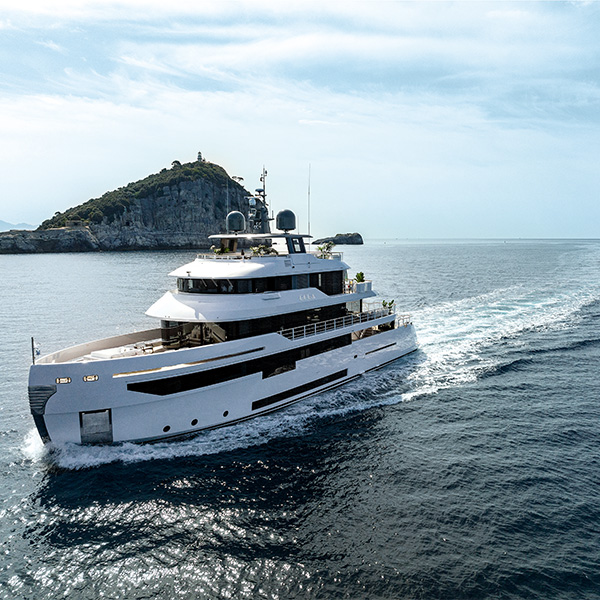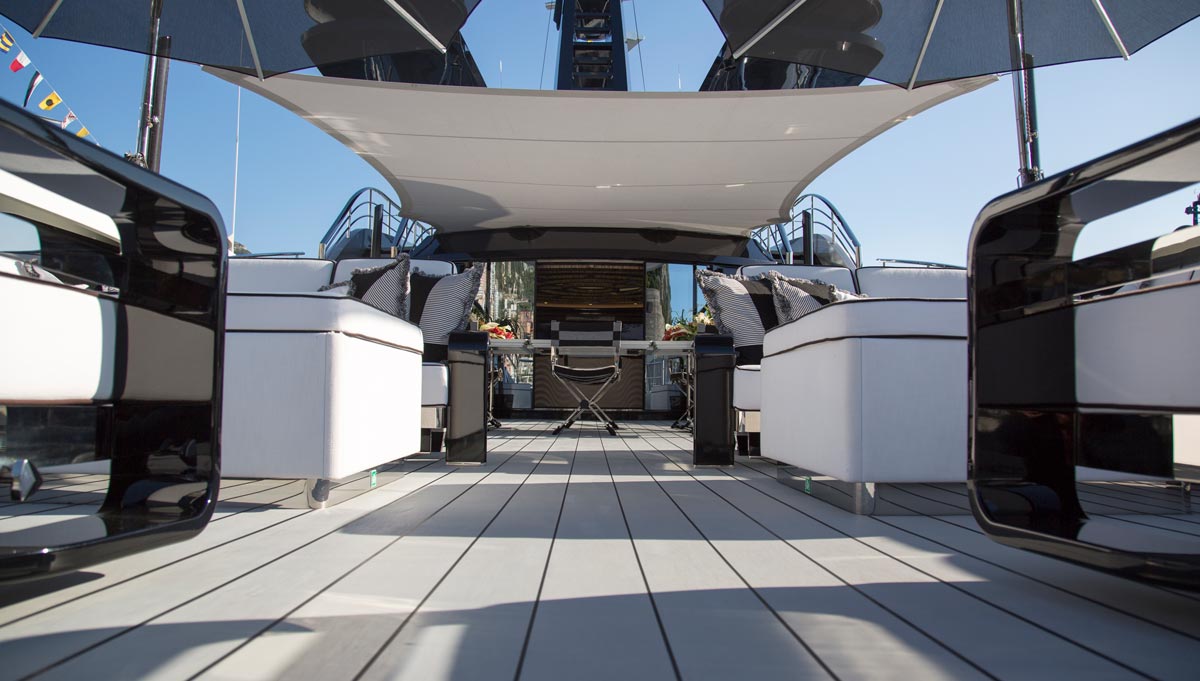
Esthec decking on boardOKTO

Esthec decking on boardOKTO
Flying the flag for greener interiors
A growing eco-conscience in the superyacht industry is leading the way for sustainable interior design.
When it comes to interior design trends in the superyachting world, we’re spoilt for choice. After all, the cream of the world’s talent is on hand to offer unrivalled support, ensuring their most discerning clients are the first to hear about the latest and greatest innovations and inspirations. And whilst many trends come and go, and others fail to take off at all – the trend for sustainable interiors has been quietly gathering pace in recent years, perhaps responding to a collective new eco-conscience.
A recent study by Unilever suggested that a third of consumers are now choosing to buy from brands they believe are doing social or environmental good. Far from being a warm and fuzzy addition to a business, green credentials are fast becoming imperative to success. These credentials may not have reached the mainstream yet in the superyacht industry, but with the ocean plastic problem hitting the headlines on a daily basis, and recent yacht launches like Black Pearl garnering respect and praise for its eco-friendly technology, it’s unsurprising that designers are now thinking about the best way forward when it comes to a boat’s interiors.
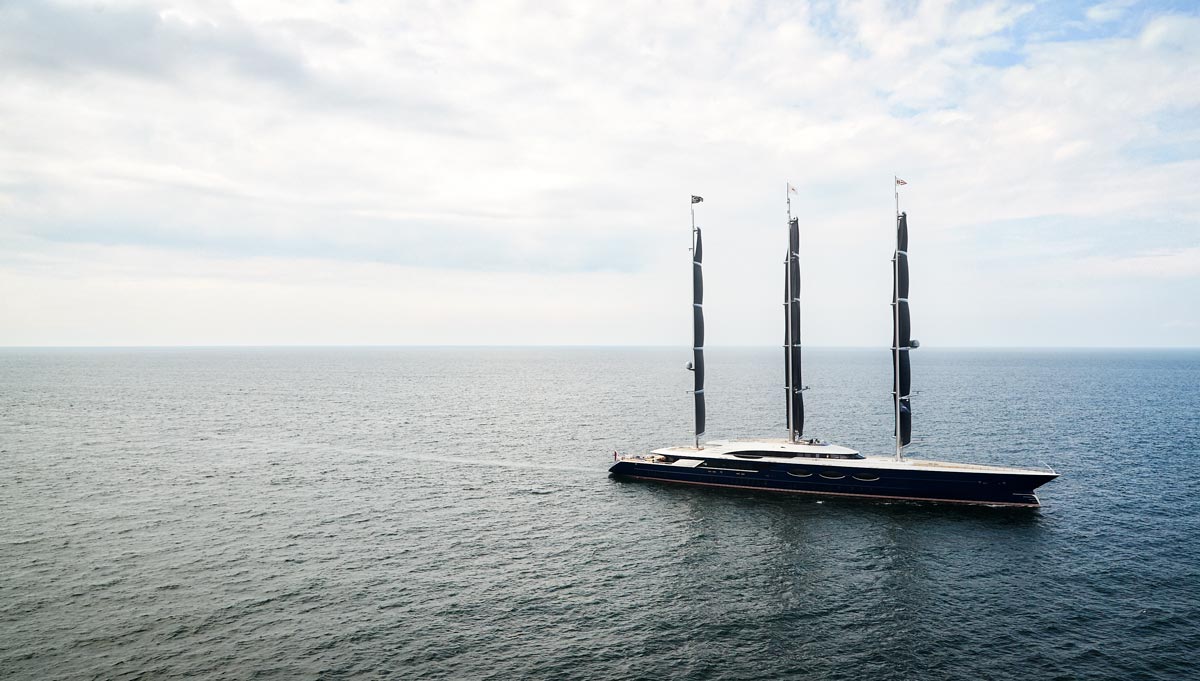
Black Pearl

Black Pearl
Kate Maclaren, senior interiors manager at Winch Design agrees. “Suppliers are moving towards more eco-friendly production processes as well as their end product,” she says. “At Winch, we source finishes from companies with ethical approaches – they use sustainable sources and feed profit back into the communities around them.” She points to brands such as Nature Squared by way of example. The company, which describes itself as ‘on a mission to meaningful, sustainable employment in developing countries,’ uses all sorts of sustainable natural materials in their interior pieces – from broken eggshells to tree bark and tobacco leaves – many of which make their way onto superyachts, such as Lürssen’s Ace.
There are others on a similar wavelength. Italian design brand Visionnaire is one of them; their recent ‘Green Re Evolution’ programme unveiled at last year’s Salone del Mobile in Milan made sustainability a priority across their product range, which includes outdoor furniture, upholstery and other superyacht must-haves. Design Unlimited, the noted British yacht designers, believes that demand for these sorts of products and innovations is two-fold; coming both from yacht owners and suppliers.
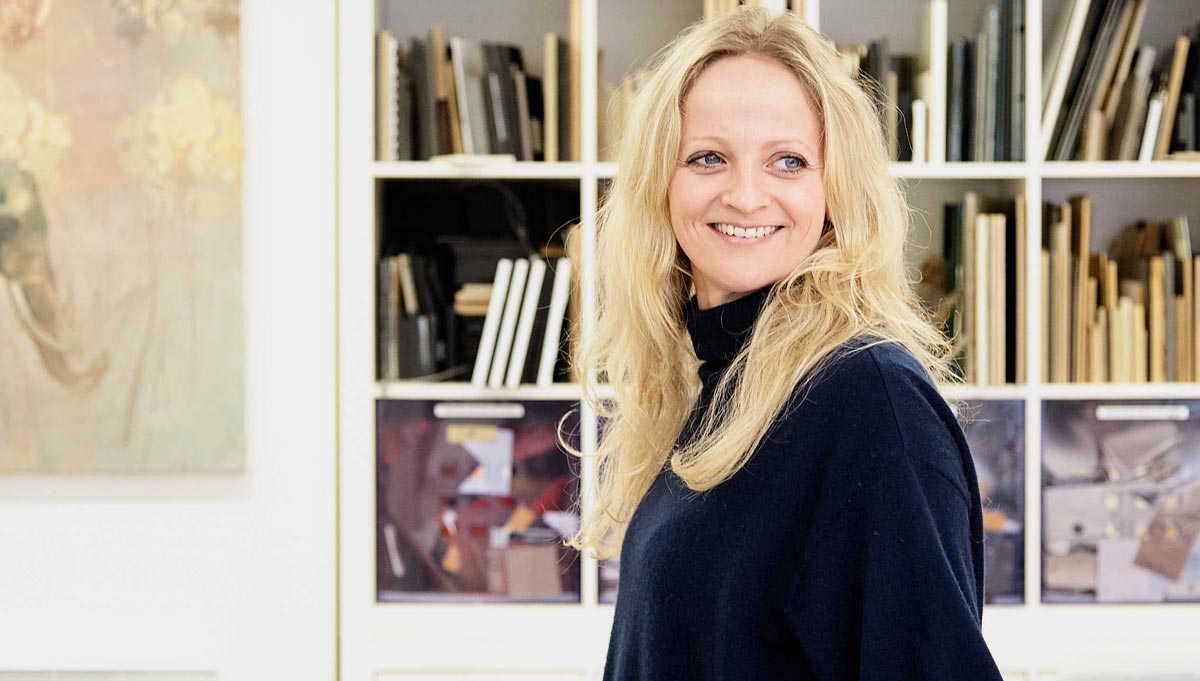
Kate Mclaren, senior interiors manager at Winch Design

Kate Mclaren, senior interiors manager at Winch Design
“A lot of our owners are already environmentally-conscious, but the world-wide movement is pushing sustainability to the forefront of people’s minds”, says Sophie Porteous. “As designers we also have a responsibility to reduce our carbon footprint where possible. We think that it is this combination that is propelling sustainability forward within the superyacht industry.”
The company has started to experiment with more sustainable materials, including bamboo. “Bamboo is one of our favourite materials within the studio, thanks to its diverse and interesting characteristics,” says Porteous. “It can be made into luxurious carpets [as they proved on Sunny Day] or transformed into flooring as a timber alternative. The bamboo plant is one of the fastest growing plants in the world and therefore very sustainable.”
The company also credits new technology with enabling good manmade alternatives to natural materials. “Quartz stone, artificial teak and recycled plastic materials are just some of the products that are growing in popularity,” adds Porteous. Dickie Bannenberg of leading design house Bannenberg & Rowell also points to companies like Esthec and Bolidt which offer very convincing alternatives to teak decking, though he does believe that there can still be a mental barrier when it comes to using a synthetic substitute material on board. “Their products are already often used by the leading yards in areas such as tender garages and lazarettes,” he explains, “but it’s still a big leap of faith for a client to specify a synthetic substitute for their exterior decks.”
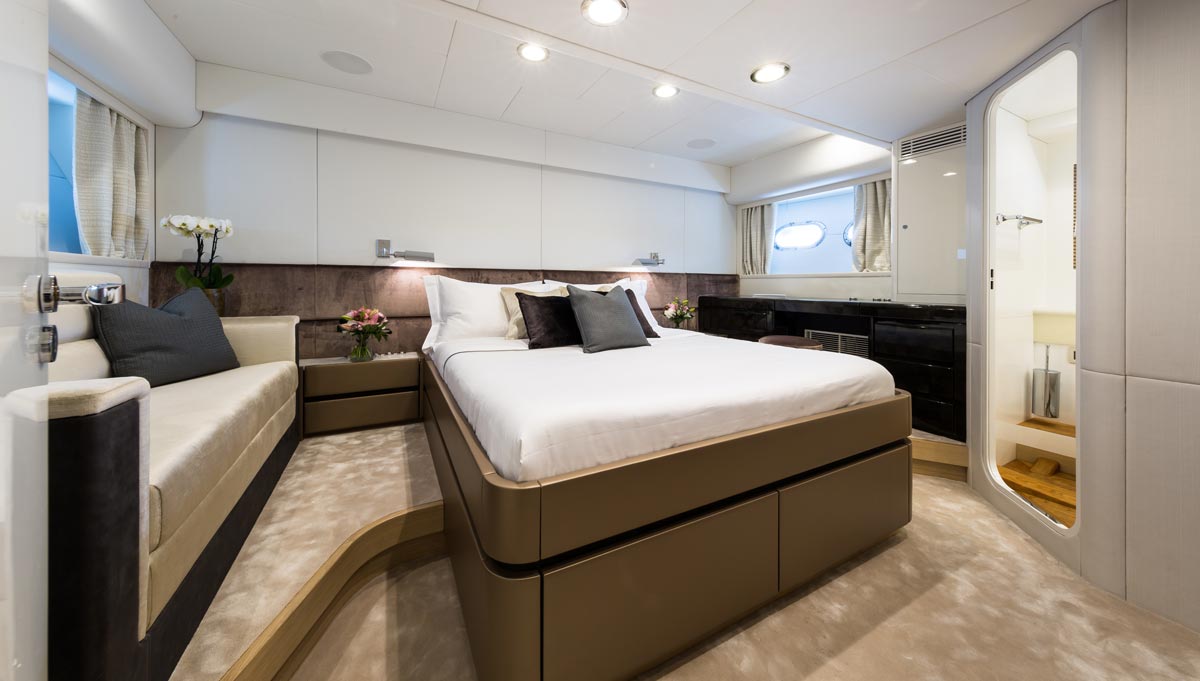
Sunny Day has carpet made from bamboo. Photo: Jeff Brown | Breed Media

Sunny Day has carpet made from bamboo. Photo: Jeff Brown | Breed Media
Regulation may well play a part in future – making these leaps a necessity rather than a choice. Kate Maclaren says it is already happening. “Regulations around the world are being changed to support sustainability. For example, any shell or rare accessories must have a CITES certificate to show provenance and similarly, teak is under strict guidelines, especially in Indonesia, to help protect its status, though this is not true of all countries.”
How this will all unravel in the future is anyone’s guess, but at the very least there are conversations happening where before there were none. Design Unlimited is opting to think positive. “We believe that this is only the beginning of the sustainability movement and it is only going to grow more popular and stronger with time. In an industry which is renowned for its throw-away culture we all have a responsibly where possible to make it more sustainable.”



